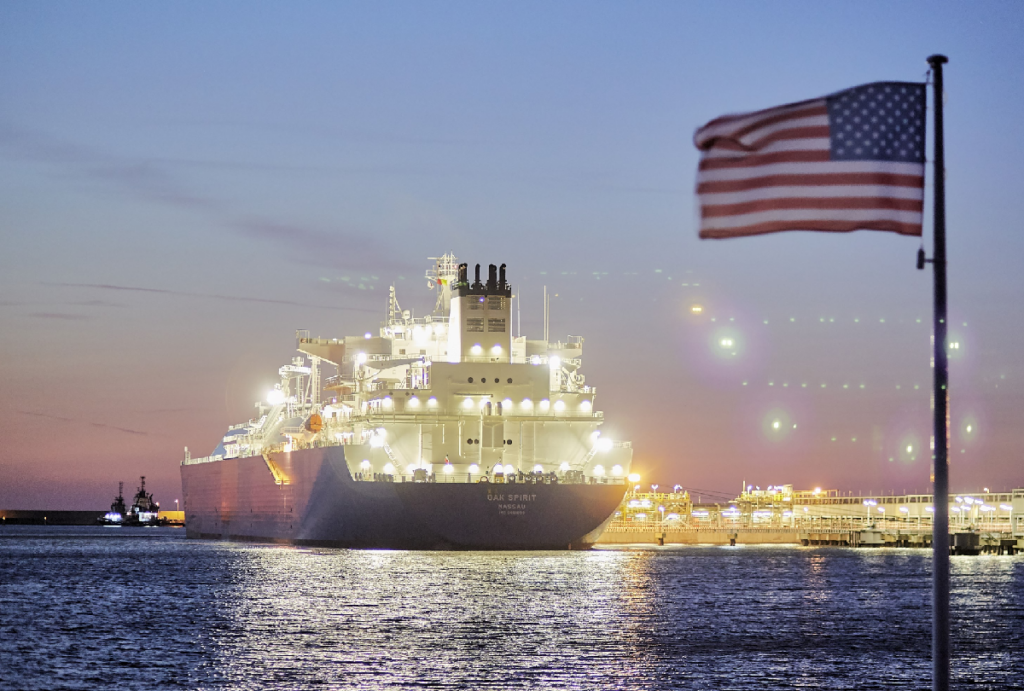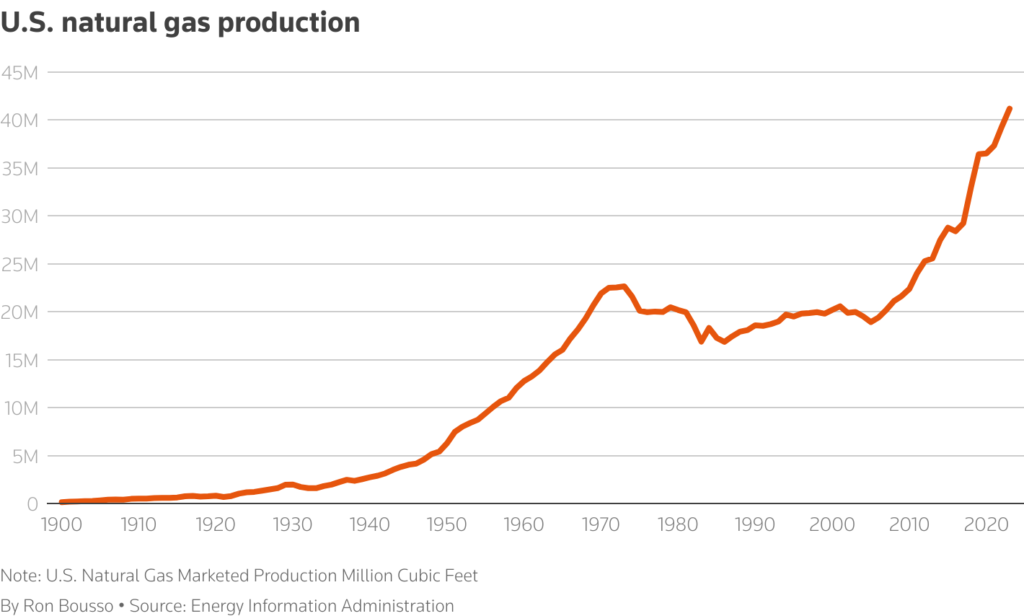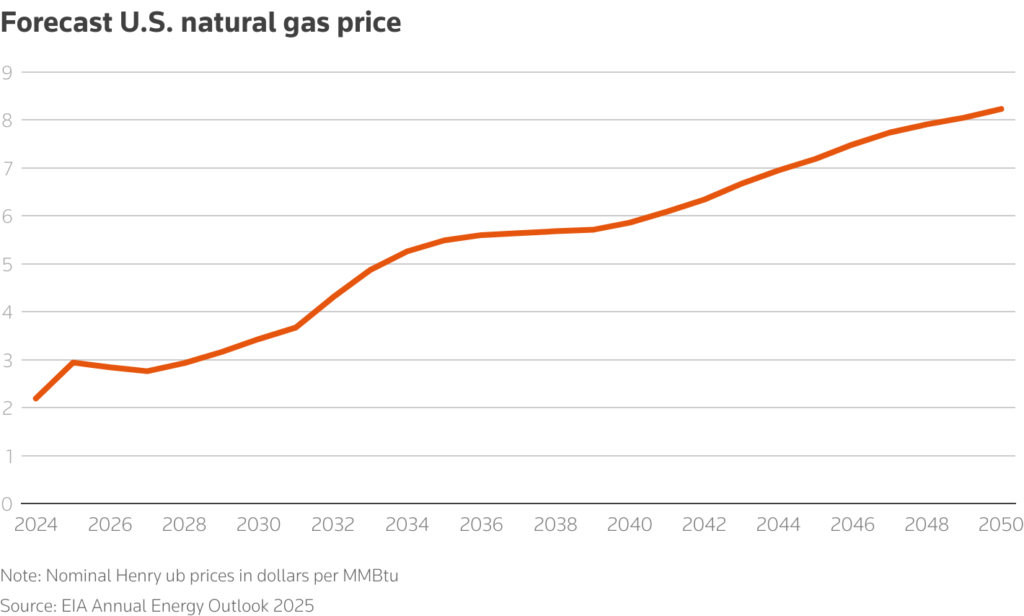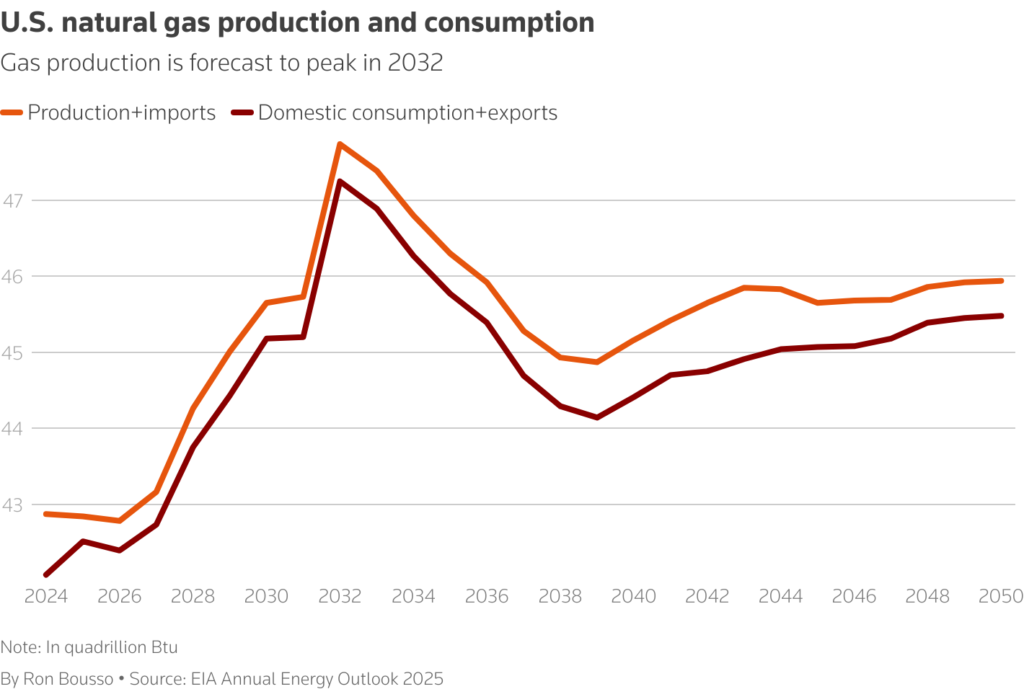By Ron Bousso

- Share of data centres in U.S. power market to more than double by 2030
- Natural gas to account for over half of incremental power supply
- U.S. natural gas production set to peak in early 2030s
LONDON, April 29 – The race for AI supremacy could have an unlikely loser: U.S. liquefied natural gas exporters.
While America boasts some of the world’s largest gas reserves, a sharp increase in electricity demand over the coming years, driven by the rise of artificial intelligence, could heavily strain the country’s creaky power systems and infrastructure, pushing natural gas prices higher and potentially undermining the economics of LNG plants.
The world’s top technology companies including Meta, Google, Amazon and Microsoft are pouring tens of billions of dollars into data centres to train and deploy AI models, which consume massive amounts of energy.
Data centres’ share in the U.S. power market is set to grow from 6% today to 13% by 2030, accounting for nearly half of electricity demand growth in that period, according to a recent report by the International Energy Agency.
Electricity demand from U.S. data centres is forecast to rise by around 240 terawatt-hours – roughly the size of total global data centre electricity demand in 2022 – between 2024 and 2030, according to the IEA. Natural gas is expected to supply over 130 TWh of that incremental demand.
Data centres have stringent “five-nines” uptime standards, meaning they are required to run 99.999% of the time. This makes energy reliability critical.
So even though many tech firms are investing in low-carbon sources of electricity generation, such as renewables and nuclear, to help power their new data centres, they are also banking on natural gas to play a key role by offering stable power. Gas is already the largest source of electricity for data centres, meeting 40% of these needs.
Gas power plants are now often being built in close proximity to data centres. For example, the Abilene-Texas-based data centre at the heart of the $500 billion Stargate project backed by OpenAI, SoftBank and Oracle will be powered by renewables as well as several newgas power plants being developed nearby, according to East Daley Analytics’ Zach Krause.

U.S. natural gas production
KEEPING PACE
U.S. natural gas production has surged over the past 15 years thanks to the country’s huge onshore shale reservoirs, turning the United States into the world’s top exporter of LNG.
Production of the super-chilled fuel is forecast to more than double from 12 billion cubic feet per day at the end of 2024 to 27 bcf/d in 2028, according to LSEG data. And more LNG facilities are planned to come on stream later this decade, which could bring production up to 40 bcf/d.
But U.S. gas production is forecast to peak in the early 2030s, according to the U.S. Energy Information Administration. The meteoric LNG growth that has benefited from cheap domestic prices may struggle to keep up in the face of the growing demand for natural gas from data centres and other industrial and residential sources which would put upward pressure on U.S. gas prices.
Indeed, in the EIA’s recent long-term outlook, it forecast benchmark Henry Hub gas prices to nearly double from $2.94 per million British thermal units in 2025 to $5.49 per MMbtu in 2035.

Forecast U.S. natural gas price
COMPETING INTERESTS
High demand for gas turbines and other infrastructure, which has already created a significant backlog, will also likely lead to higher power prices. NextEra Energy CEO John Ketchum said recently that the cost of building a gas-fired facility has tripled since 2022 to $2,400 per kilowatt.
And as demand for electricity and gas grows in the U.S., so will pressure on the country’s energy infrastructure such as transmission and distribution systems and gas pipelines.
The U.S. has not invested enough in either, as evidenced by the severe disruptions aging power infrastructure has caused in recent years, including a wave of blackouts in Texas and Florida in 2021 and 2024, respectively, both due to severe storms.
Most major transmission networks are already at capacity, and the large additional demand would require significant infrastructure improvements, Krause said.
That, in turn, could lead to more outages and greater volatility in gas prices.
If all these forces result in a sharp rise in domestic gas prices, U.S. LNG plants – which typically use gas to power their energy-intensive cooling process – could see their profit margins and competitiveness decline sharply.
In a scenario of rising domestic gas and power prices, U.S. administrations would be faced with a tough choice: prioritise energy-hungry U.S. data centres or gas exporters? Given the likely importance of AI to U.S. economic and geopolitical interests moving forward, LNG exporters may well find themselves losing out.

Gas production is forecast to peak in 2032
** The opinions expressed here are those of the author, a columnist for Reuters. **
Want to receive my column in your inbox every Thursday, along with additional energy insights and trending stories? Sign up for my Power Up newsletter here.
Reporting by Ron Bousso. Editing by Mark Potter
Share This:




 CDN NEWS |
CDN NEWS |  US NEWS
US NEWS 































